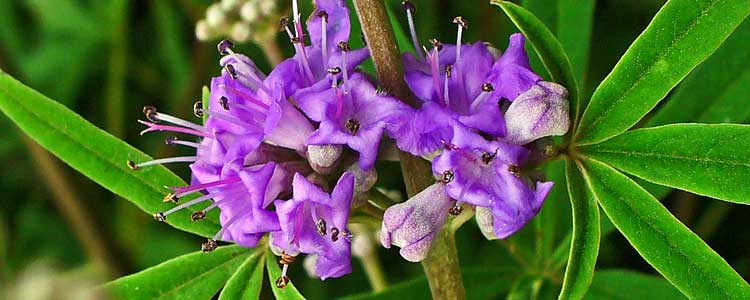 Chasteberry has an extended history of being useful for addressing many different problems brought about by female hormonal imbalances. These include premenstrual syndrome, breast tenderness, and infertility. While I’ve previously written about the benefits of chasteberry, I neglected to mention what sort of dosage people should be using the herb. Since I’ve been getting quite a few emails on the subject, I figured it’d be easier just to write a post about it for everyone. However, it is always best for you to speak with your primary health care provider about a suitable dose fitted to your specific requirements for the best results.
Chasteberry has an extended history of being useful for addressing many different problems brought about by female hormonal imbalances. These include premenstrual syndrome, breast tenderness, and infertility. While I’ve previously written about the benefits of chasteberry, I neglected to mention what sort of dosage people should be using the herb. Since I’ve been getting quite a few emails on the subject, I figured it’d be easier just to write a post about it for everyone. However, it is always best for you to speak with your primary health care provider about a suitable dose fitted to your specific requirements for the best results.
Common Dosage Recommendations
The UPMC says that an average dosage of chasteberry includes 20 mg of a supplement three times a day or 40 drops of the liquid extract taken daily. However, meeting with a knowledgeable healthcare provider can help shape the most effective dosage for your requirements.
Chasteberry Dosage and Research for PMDD
Typically, most herbalists will advocate using no less than 20mg/day of the herbal extract. One study completed in 2001 involved 170 participants that were diagnosed with PMDD. The analysis lasted for three menstrual cycles. The women’s symptoms prior to the analysis were compared to their symptoms following the analysis. More than 1/2 of the participants reported a considerable improvement on all issues except bloating. Other than that, they reported no unwanted effects.
Many smaller studies have confirmed the preceding outcomes by displaying that this herb was powerful in cutting the severity of, or entirely removing, the participant’s PMDD symptoms.
In a German study of 440 females, 52% of those who used it documented an improvement in their symptoms. Within the placebo group of this same study only 24% showed an improvement.
Another study had the girls involved state how well they believed the herb worked. 92% of those stated that it worked “good, great, or acceptable” for dealing with their symptoms. In a different study, it was proved to be equally as powerful as 200 milligrams of vitamin B6 in terms of relief.
Chasteberry Dosage for Menopause
This herb is helpful to alleviate most of the unpleasant symptoms of menopause, including irregular cycles, hot flashes, feelings of melancholy, and flooding. The dosage for this issue is between 30 and 50 drops, three times daily. Like all herbs, it works best when coupled with a lifestyle that includes whole foods, plenty of water, and gentle exercise. It is simple to grow in a home garden, even though you will not find the herb in the wild. If you do decide to grow it yourself keep in mind that it needs a lot of space because it could get up to seventeen feet tall in some cases.
Chasteberry Dosage for PMS
Take 400mg to 500mg of chasteberry extract once per day when dealing with PMS symptoms. The herb is often found in an combination herbal blend. While there might be less chasteberry in these combination goods, there is the added benefit of the other herbs that typically are combined to boost the effects of each other.
Chasteberry Dosage for Acne
Experts suggest 40 mg/day first thing each day or 20 mg twice-daily when dealing with acne. Vitamin B6 is frequently taken with chasteberry for an additional anti-acne advantage. It should regularly be used for between 3-6 months to determine if it is something that is working well for you.
How Long to Use Chasteberry
Frequently, you must use chasteberry for at least several months before attaining any therapeutic advantage. Addressing hormonal imbalances in the body does take time. The University of Maryland Medical Center states that you must take chasteberry for between 1 year to 18 months to achieve its maximum effectiveness. It notes one study where females started to get periods again after six months of use. Dealing with a physician experienced in natural medicine will make sure that you use chasteberry correctly and efficiently.
A Word of Warning
Drugs.com notes that using chasteberry is contraindicated in the event of a complicated ovarian function, or if you are pregnant or breastfeeding. It may hinder steps of fertility medications while chasteberry itself may enrich fertility. Speak to your physician regarding the appropriateness of utilizing chasteberry if you’re undergoing conventional infertility treatments. The Memorial Sloan-Kettering Cancer Center says this herb has showed estrogenic activity that could prove challenging should you have breast cancer or other hormone-sensitive health issues.
Other Concerns
A long history of use in Germany implies that chasteberry doesn’t carry a large risk of adverse effects. However, many unwanted effects are reported. These include itch, dyspepsia, rash, acne, menstrual irregularities, nausea, and headache.
